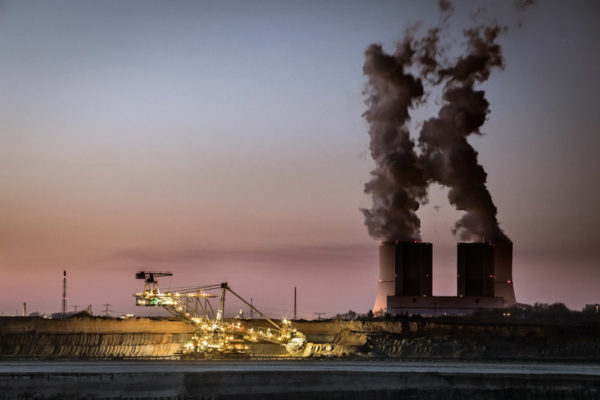6 things we learned from BP’s annual energy report
TLDR: Green growth aside, a pretty terrible year for the climate

The annual report by oil giant BP doesn’t always tell it like it is when it comes to climate change — but the data in this year’s edition reflects a confused world failing to get its act together to limit global warming.
Green leader China relapsed with a coal-fired construction splurge while Donald Trump’s America has seen renewable energy hit new heights, mainly thanks to the policies of his predecessor.
The UK’s independent climate advisers may warn the country is set to miss its carbon targets due to a lack of meaningful future policies, but the decisions of the past mean it stands alone as Europe’s climate big hitter whilst the climate-focused EU from which it is separating grapples with insufficient renewable energy growth to power its economic recovery.
Here are those, and some other key findings, from the report:
Uptick in CO2 after years of improvement
After posting near-zero growth for three years from 2013 to 2016, global energy sector CO2 emissions increased by 1.6% — mainly driven by major emerging markets China, India, Turkey, Iran and Indonesia.
Something is going very wrong in the EU
The European Union has long fancied itself the world leader in tackling climate change, with aggressive policies on renewables, energy efficiency, and emissions cuts.
But 2017 was another poor year for the continent’s climate efforts, registering the 4th highest increase in real-terms carbon emissions in the world. The EU has now seen its energy-related emissions increase three years in a row, despite major reductions in the UK.
Though the jump in emissions is partially cyclical, compared to the rapid reductions needed to limit climate change, three years of increasing emissions is alarming.
Spain and Italy have seen their renewable energy uptake grind to a halt after wind and solar booms early this decade. Now that their economies are recovering, the lack of progress on renewable energy is seeing CO2 emissions surge.
France, in contrast, did increase renewable energy output, but not enough to offset a fall in generation from the ageing nuclear fleet in recent years, leading to an increase in gas demand.
Meanwhile Germany, which is set to miss its end-of-decade climate targets, managed to keep its CO2 emissions level in 2017, but saw emissions rise in two previous years as natural gas demand increased both on the power sector and other sectors. Coal demand in the country has fallen every year since 2013, but not enough to offset increases in gas and oil use.
UK is Europe’s climate leader (for now)
It may be set to leave the European Union in a year’s time and lacking any future policy direction but, right now, the UK is the only EU country seeing major falls in emissions — thanks to a mixture of accidental de-industrialisation, a coal phase-out and a tax on carbon.
The carbon price floor (£18 per tonnes of CO2) means emitting carbon costs significantly more in the UK than it does in the EU, which relies solely on the European trading system (ETS) — though recent reforms appear likely to strengthen the scheme.
Perhaps as a result Macron has been touting an EU-wide carbon tax to accelerate the transition away from coal.
Crippled by Trump, US still outruns EU with ease
Donald Trump may have pulled out of the Paris climate agreement, introduced steep tariffs on solar power materials and made it easier for fossil fuel companies to pollute, but the United States continued to cut emissions and deploy renewables at a higher rate than most developed economies.
Most of this was likely a hangover from the climate agenda of his Barack Obama, so look for US gains to be undone in the coming years.
Renewables produce more power than India uses
The world’s wind turbines and solar panels now generate more power globally than India, the third largest consumer.
China overtook the the US in the wind and solar stakes, becoming the number one producer, but both saw booming growth, with Germany, Japan, India, Brazil, Turkey and the UK also posting strong growth numbers.
Coal’s not dead yet
Much of that headline stat on rising global CO2 emissions is the slight reversal in fortune of the dirtiest fossil fuel coal.
Growth in coal demand last year was driven by India, Turkey, and disappointingly, South Korea even as the new president is pursuing a more sustainable energy policy.
Germany, South Africa, the US and UK achieved the largest reductions.
Of course, the BP data only takes us to 2017 and reflects the impact of policies come up with decades before then.
That’s how ‘green’ governments end up with rising emissions and climate sceptic ones give birth to renewable booms. What comes next is, frankly, hard to predict.




